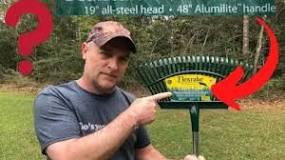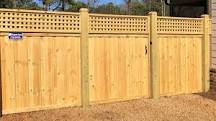When it comes to lawn care, many homeowners find themselves asking, “Which is better: an aerator or a dethatcher?” The answer really depends on your lawn’s needs, but in general, both tools serve different purposes. Aerators are fantastic for improving soil health and promoting root growth, while dethatchers are great for removing thatch buildup. So, if you’re looking to enhance your lawn’s overall health, you might want to consider using both!
What Is an Aerator?
An aerator is a tool designed to perforate the soil with holes, allowing air, water, and nutrients to penetrate down to the roots. This process helps alleviate soil compaction and encourages healthier grass growth. Here are some key points about aerators:
Benefits of Aeration
- Improved Soil Structure: Aeration breaks up compacted soil, making it easier for roots to grow.
- Enhanced Nutrient Absorption: With better airflow and water penetration, your grass can absorb nutrients more effectively.
- Reduced Water Runoff: Aerated soil can hold more water, reducing the need for frequent watering.
When to Use an Aerator
- Compacted Soil: If your lawn feels hard or bouncy when you walk on it.
- Heavy Foot Traffic: Areas that see a lot of activity can benefit from regular aeration.
- New Grass Seed: Aerating before seeding can help new grass take root better.
What Is a Dethatcher?
A dethatcher, on the other hand, is designed to remove thatch—a layer of dead grass, roots, and organic matter that can build up on the soil surface. While a little thatch is normal and beneficial, too much can suffocate your grass. Here’s what you need to know:
Benefits of Dethatching
- Prevents Disease: Removing excess thatch can reduce the risk of lawn diseases.
- Improves Air Circulation: With less thatch, air can circulate better around your grass.
- Encourages Growth: Thatch removal allows nutrients and water to reach the soil more easily.
When to Use a Dethatcher
- Thick Thatch Layer: If you notice a thick layer (over 1/2 inch), it’s time to dethatch.
- Poor Drainage: If water tends to pool on your lawn instead of soaking in.
- Patchy Grass Growth: Areas where grass isn’t thriving could benefit from dethatching.
Conclusion
So, which is better? It really boils down to what your lawn needs at any given time. If you’re dealing with compacted soil or poor nutrient absorption, an aerator is your best bet. Conversely, if you have an issue with thatch buildup suffocating your grass, then a dethatcher is the way to go. For optimal results, consider using both tools in conjunction; they complement each other beautifully!
FAQ
How often should I aerate my lawn?
Typically, you should aerate your lawn once a year. However, if you have heavy clay soil or high foot traffic areas, you might want to do it twice a year.
Can I dethatch my lawn every year?
Dethatching every year isn’t necessary unless you have significant thatch buildup. A good rule of thumb is to dethatch every 2-3 years or when the thatch exceeds 1/2 inch.
Is it better to aerate or dethatch in the spring or fall?
Both processes are best done in the fall when temperatures are cooler and grass is actively growing. However, if you’re in a warmer climate, spring can also be effective.
Can I rent these tools instead of buying them?
Absolutely! Many garden centers and home improvement stores offer rental options for both aerators and dethatchers. This way, you can keep your costs down while still maintaining a healthy lawn.







